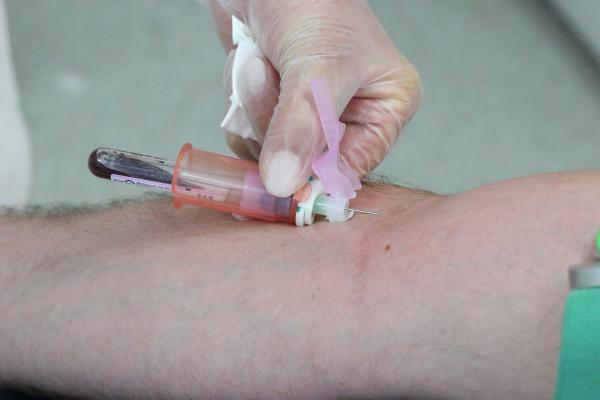IQ
The measurement itself is not controversial. It’s been measured for over 100 years and is a reliable [1] valid overall estimate of a person’s cognitive abilities. While it does not measure all of a person’s cognitive skills, I don’t think anyone has found a better measure. The controversy lies in its misuse and misunderstanding of what it means. It is not innate, not dependent solely upon our genes. It is dynamic, changing, and changed by environment and upbringing. Using a single measure of IQ to decide a person’s future, as happened with the “11 plus” in England [2], is clearly wrong. It is never a measure of a person’s worth or judgment. Looking at a population, such as children with lead blood levels, is entirely appropriate and, I believe, can yield rich results.
I'm afraid I have to disagree with the comment that the lesser effect of lead at higher blood levels leads one to question the study's validity. While not a toxicologist, I am a psychopharmacologist, used to observing the effects of medications on the body and brain. Yes, of course, the toxicity depends on the dose – but not at all doses. Many toxic substances, in fact, are beneficial at low doses, for example, salt or iron. Many drugs have increasing effects until all the receptors are occupied; further increases do not increase that effect but may well cause effects in other areas. I suspect that lead, after a certain dose, does not reduce the IQ further but probably causes neurological symptoms and damage to other organs.
You mentioned the Dunedin study last week in connection with childhood illness and aging. Several years ago, I suggested another study we might consider performed in Dunedin, New Zealand, which I have been following for many years because it has contributed significantly to understanding risk factors for schizophrenia. It is the Dunedin Multi-disciplinary Health and Development Study which has followed people from their birth in 1972-3 for over 45 years.
In this cohort, blood lead was measured at age 11 and correlated with IQ at age 38. Each 5ug/dL increase in blood lead level was associated with a 1.6 lower IQ score. (A level over 10ug/dL at 11 was associated with a reduction of 2.7 points in adult IQ and 1.7 points at age 11.) It was also associated with lower socioeconomic status at 38, which has usually been considered a confounder and “corrected for” but might also be considered an outcome since lead is also associated with decreased executive functioning, impulsiveness, disorganization, and substance abuse. But what makes this study particularly interesting is that at age 11, the lead level was not correlated with social-economic status, which is most unusual.
As in the current study, Dunedin showed that mixed response to lead levels. At age 38, there was a clear linear dose-response relationship where any increase in childhood lead related to lower socioeconomic status and lower IQ; but only for those with lead levels <5ug/dL; the IQ was higher in those with a childhood level of 6-10ug/dL.
The other document I looked at was the massive review by HHS’s National Toxicology Program of the effects of low-level lead. This showed “sufficient evidence” (“an association…in which chance, bias, and confounding could be ruled out with reasonable confidence”) that in children
- with less than 5ug/dL, lead levels correlated with decreased academic achievements and IQ and increased attention-related behaviors and problem behaviors.
- in those with less than 10ug/dL, the lead level was correlated with delayed puberty, reduced potential growth, IQ, and hearing
We don’t know what the safe blood level of lead is if there is one at all. But from the evidence, I conclude that it is clearly way below 5ug/dL. If there is a J-shaped curve, a “Goldilocks” acceptable level where too little and too much are bad (once again, think of salt and iron), then for lead, that sweet spot appears to be below the measurable lower limit of about 1ug/dL.
In conclusion, low levels of lead are harmful. We have made enormous strides in reducing lead, but hundreds of thousands of people have dangerous amounts of lead in their bodies. There is much work still to be done.
This is an important issue for ACSH because, for many years, there was a piece on its website stating that lead levels of 5ug and below were not harmful. I had suggested that it be taken down, but it did not happen. They will be removed now.
Sources:
Childhood Lead Exposure and Adult Outcomes JAMA DOI:10.1001/jama.2017.1560
Low-level environmental lead exposure and children’s intellectual function: an international pooled analysis. Environmental Health Perspectives DOI: 10.1289/ehp.7688
National Toxicology Program, US Department of Health and Human Services. US health effects of low-level lead. June 13, 2012.
Association of Childhood Blood Lead Levels With Cognitive Function and Socioeconomic Status at Age 38 Years and With IQ Change and Socioeconomic Mobility Between Childhood and Adulthood
JAMA. DOI:10.1001/jama.2017.1712
Blood lead, intelligence, reading attainment, and behaviour in eleven-year-old children in Dunedin, New Zealand. J Child Psychology Psychiatry. DOI: 10.1111/j.1469-7610.1988.tb00687
Blood lead levels in 579 Dunedin eleven-year-old children: a report from the Dunedin Multidisciplinary Health and Development Unit. New Zealand Medical Journal
[1] Reliable defined as repeatable by different raters at the same time or at other times by the same rater
[2] This is an examination used to determine what middle and senior high schools children will be directed towards – it includes not only what we might call talented and gifted, but vocational schools, etc.




